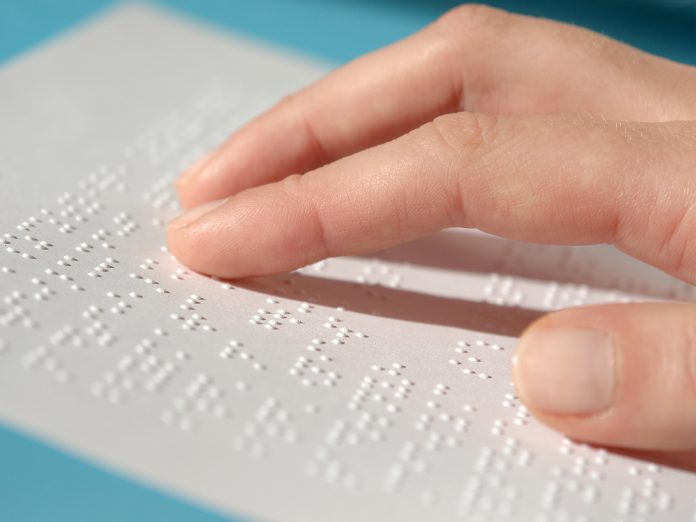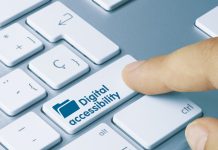Elspeth Bond, Marketing Executive at Synertec Ltd, explains why more must be done to improve healthcare communication strategies for patients in order to improve accessibility and inclusivity as well as promote greater efficiency across the NHS
The importance of inclusivity and accessibility to healthcare communication is something that is often overlooked. Considering there are 1.6 million people with complex disabilities in the UK, it is imperative that healthcare organisations urgently prioritise it. Complex disabilities include people with sight loss, hearing loss, autism and learning disabilities. The Accessible Information Standard, also known as AIS, is a set of directions that all health and social care providers must adhere to. The legal requirement was introduced in 2016 and aims to improve the lives of people who need information communicated in a format they understand, ensuring vital information is accessible to everyone.

AIS-compliant healthcare communication
Synertec has been working closely with NHS Trusts for over 20 years and understands the importance of providing AIS-compliant communications to all who need it.
Even with the lack of resources and budget constraints that the NHS currently faces, we assist the Health Service in supporting the individual needs and preferences of millions of patients.
With complex patient pathways, it is not uncommon for patients to receive multiple letters from various systems within a single treatment incident. This highlights the importance of ensuring that these letters are presented in a format that is easily comprehensible to patients. Failing to do so can have significant consequences on individuals, preventing them from effectively managing their own conditions and potentially leading to severe implications for their health and wellbeing. Appointment location, timing, required items/information, contact details and medication management are examples of crucial instructions which can easily be missed if the information is not presented in a way that can be understood. This, in turn, contributes to higher Did Not Attend (DNA) appointment rates and patients needing to see healthcare professionals more than necessary.
The AIS requires healthcare providers to ask and record patients’ communication needs, yet according to research by the Royal National Institute of Blind People (RNIB), ‘77% of people with accessible information needs reported rarely or never receiving information in alternative formats.’ This suggests that these important questions are often missed.
The availability of digital communication methods like email, SMS, and text-to-speech has made it easier for many patients with additional needs to access their correspondence. However, it’s essential to recognise that not everyone who requires it can rely on these digital options. According to Ofcom’s 2023 Technology Tracker, ‘around 7% of households in the UK still do not have internet access.’ Moreover, NHS Digital found that ‘approximately 11.9 million people, which accounts for 22% of the population, lack the necessary digital skills to navigate everyday life in the UK,’ including accessing important healthcare information and emails. Therefore, it is crucial to consider alternative methods of communication, such as braille, to ensure that all patients can access the information they need.
Synertec provides NHS Trusts with various AIS-compliant letter formats to empower patients with additional needs to select the communication style that aligns with their specific requirements. Letter options include braille, which is accompanied by an original print version and a braille envelope. This way, patients who read braille documents can have full independence when accessing their communications.
ClearRead, another of Synertec’s AIS letter offerings, uses large font, simplified wording and has definitions of headings to make a document as clear as possible. The support for those with sight-related issues also includes coloured paper to reduce the glare on the document. This can be applied to both paper and digital documents. This can also be converted to an MP3 audio file, which is delivered by email. A PDF format can be sent as this contains an in-built text-to-speech reader. EasyRead was developed exclusively for Synertec and builds on the ClearRead option. The icons enhance clarity and comprehension for those with learning or cognitive disabilities or those whose first language is not English.
The huge workload the NHS staff are under is an undeniable factor in why AIS are not prioritised; however, we know that once in place, AIS letters do not add to their workload. This is because the process is automated. This guarantees that the letters will be sent out in the correct format and in the same timeframe as standard letters. There is also no extra charge for Synertec to format an original letter into an AIS-compliant letter.
Case studies for digital healthcare communication
University Hospital Bristol and Weston NHS Foundation Trust exemplify a commitment to ensuring patients’ accessibility to healthcare communication. They explain, ‘The main benefits meanthat it doesn’t matter which of our hospitals the patient visits, any appointment/admission correspondence generated from our patient administration system will always get sent out in the required format the patient has requested.’
Other Trusts, such as Manchester University NHS Foundation Trust, have made it compulsory, as the standards require. After introducing a new electric patient records system, HIVE, ‘Manchester University NHS Foundation Trust has made the decision that the AIS will be mandatory in HIVE, that is, we are making it mandatory to ask, and record patient’s accessible information and communication needs.’
By prioritising patients’ needs, healthcare providers can ensure that patients from all walks of life can access the care they need without any barriers. This approach must be uniformly implemented across all NHS Trusts, not only to ease the health service’s workload (with a reduction in missed appointments and returning patients) but ultimately for the wellbeing of all patients.
Contributor Details
More About Stakeholder
-
Synertec Ltd: Document solutions and the Prism virtual printer
Synertec is the market leader in document solutions, and we process over 80 million documents a year for a wide range of public sector and commercial organisations, including 150 NHS trusts and a number of local authorities.
















